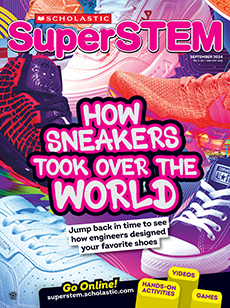Every morning, Ryan Harris rolls out of bed by 5:30 a.m. He’s up early to surf the waves in the Pacific Ocean along the coast of Los Angeles, California. Harris surfs on a one-of-a-kind board that he made himself. “One of the things I love most is that I get up and go surf on something I made with my own hands,” he says.
Harris is the owner of ECObyRy, a company that creates sustainable surfboards. He makes boards out of recycled materials and supplies, which reduces harm to the environment. Harris started surfing more than 20 years ago. But he later found out that the materials used to make surfboards are dangerous to the people making them—and harmful to the planet. Harris spoke with Scholastic about inventing a safer and Earth-friendly way to build surfboards.
Ryan Harris gets up by 5:30 a.m. every morning. He lives along the coast of Los Angeles, California. He’s up early to surf the waves in the Pacific Ocean. Harris rides a one-of-a-kind board. He made it himself. “One of the things I love most is that I get up and go surf on something I made with my own hands,” he says.
Harris is the owner of ECObyRy. It’s a company that makes sustainable surfboards. They’re made from recycled materials and supplies. That helps the environment. Harris started surfing more than 20 years ago. But he later found out some surfboard materials are toxic. They can harm the people making the boards. And they can hurt the planet. Harris spoke with Scholastic about inventing safer and more Earth-friendly surfboards.

